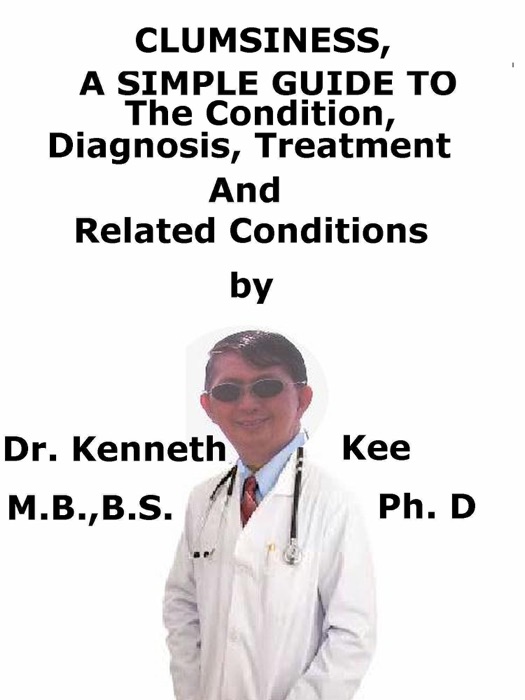Download ~ Clumsiness, A Simple Guide To The Condition, Diagnosis, Treatment And Related Conditions " by Kenneth Kee ~ eBook PDF Kindle ePub Free

eBook details
- Title: Clumsiness, A Simple Guide To The Condition, Diagnosis, Treatment And Related Conditions
- Author : Kenneth Kee
- Release Date : January 11, 2017
- Genre: Health & Fitness,Books,Health, Mind & Body,Professional & Technical,Medical,
- Pages : * pages
- Size : 148 KB
Description
Clumsiness, a Developmental coordination disorder is a medical childhood disorder that produces poor coordination and clumsiness.
About 6-8 % of children seem to be developing in the normal way but have difficulties with coordination and with learning new skills which involves their function and involvement at home, at school and in the playground.
The underlying cause for the movement problems children with DCD have is linked to abnormal brain development that influences the way in which the brain produces connections (internal models) between different components of the brain when learning a new skill.
This in turn forces the child's capability to use data from the senses to prepare, adjust and control their movements.
DCD influences fine and gross motor abilities, balance and posture, basic motor patterns (walking, running, jumping) and especially skilled action that need practice, managing, attention and working memory (ball skills, drawing and handwriting, sport skills).
Children with this disorder may:
1. Have trouble holding objects
2. Have an unsteady walk
3. Run into other children
4. Trip over their own feet
Some frequent symptoms are:
1. Clumsiness
2. Delays in sitting up, crawling, and walking
3. Difficulties with sucking and swallowing during first year of life
4. Difficulties with gross motor coordination
DSM 5 manual diagnostic criteria
A. Motor performance that is considerably below expected levels, given the person's chronologic age and previous opportunities for skill acquisition.
The poor motor performance may present as:
1. Coordination problems,
a. Poor balance,
b. Clumsiness,
c. Dropping or bumping into things;
2. Marked delays in achieving developmental motor milestones
a. Walking,
b. Crawling,
c. Sitting
3. In the acquisition of basic motor skills
B. The coordination disturbance considerably and persistently affects activities of daily living or academic achievement
C. Onset of symptoms is in the early developmental period.
Treatment
Physical education and perceptual motor training (combining movement with tasks that need thinking, like math or reading) are the best methods to treat coordination disorder.
To learn a motor skill takes practice along with perseverance and an ability to tolerate failure.
Parents and teachers are best placed to encourage repeated practice as part of everyday life
TABLE OF CONTENT
Introduction
Chapter 1 Clumsiness, A Development Co-ordination Disorder
Chapter 2 Causes
Chapter 3 Symptoms
Chapter 4 Diagnosis
Chapter 5 Treatment
Chapter 6 Prognosis
Chapter 7 ADHD
Chapter 8 ODD
Epilogue